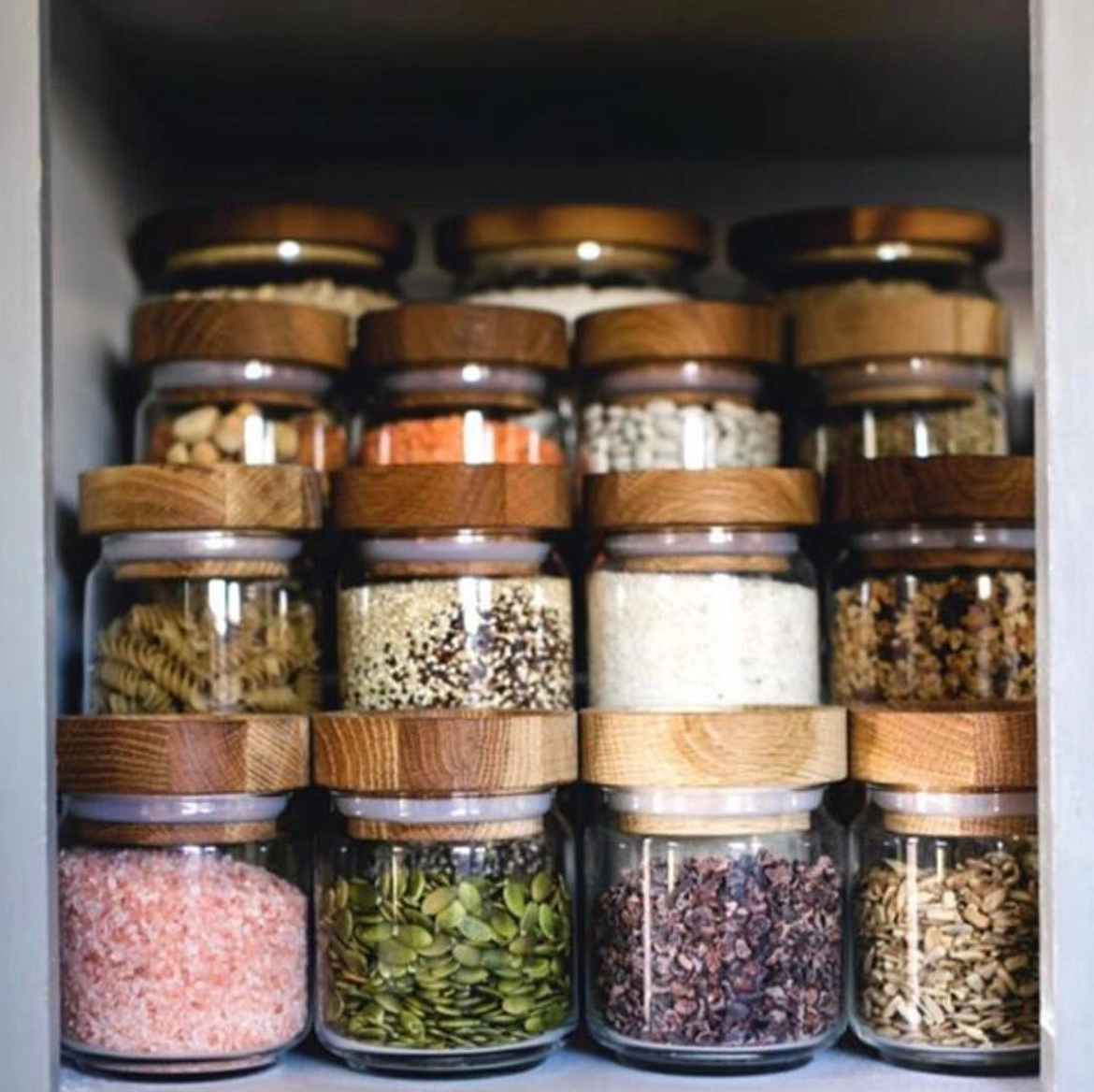Zero Waste Living: Kitchen Pt. 1

Before I knew what “Zero Waste Living” meant, I was always intrigued on finding ways to live my life with less plastic. Years ago when I first moved into my little bungalow in Palm Springs, the first thing I wanted to do was find as many glass and mason jars as I could for my kitchen. Fast forward to 8 years later, and I’m still finding myself adding glass containers, jars and buying in bulk- however I do it for a worthy cause rather than pure aesthetic.
What is a zero waste lifestyle? It’s beyond eating “clean” and ditching your plastic- it involves adopting a more conscious, minimalistic approach to living. However, let me be clear, going zero-waste does not happen overnight. It takes time and some investing and major lifestyle changes. Once I became conscious of my much waste and trash I accumulate and how much plastic I used, I was convinced there had to be easy steps for a zero-waste lifestyle. Below are my go-to suggestions for creating a zero waste kitchen.
Switch from Paper to Cloth
I can’t tell you how many times I mindlessly went for that huge roll of paper towels when cooking in the kitchen and grabbed probably more than I needed. In 2017, my partner and I invested in a vegan delivery business in Mexico, with the contract we lived in the live/work home that had a gorgeous kitchen. I remember everything was basically as zero waste as possible except for the paper towels. For us, it was an easy transition: we went to our local tienda (store) and bought cheap wash clothes and cut them into hand-towel sizes. It was a simple transition and made me feel better in the end.
The cloth towels can clean up accidental spills, cleaning kitchen appliances, washing windows, etc., What I like to do is keep a dedicated drawer in the kitchen with up to 15-20 hand made towels to keep on hand. For those who are pretty active in the kitchen will see a huge benefit for using cloth over papers. When it’s time for laundry, I just do an extra load of towels. Simple!
Make Your Own Zero Waste Dish Soap
Making my own dish soap is one of my favorite Sunday afternoon activities. I know I know, sounds pretty lame. But for some reason I find tranquility and super enjoy it. Creating a zero waste kitchen for me meant looking underneath the sink. I never realized how many plastic bottles, duplicate brands, and chemicals I had stored underneath. There was a radically honest moment I needed to have with myself: How many months had I been storing all these chemicals and how often did I actually use them? The answer- a long friggin time and not so often.
One of the most simple recipes I have for an all purpose cleaner is 1 part vinegar to 4 parts water, a few drops of any essential oil and mix in a spray bottle. I use this all purpose cleaner for counter tops, stove, oven, windows, cleaning the inside of the fridge. To clean dishes, I like to use a bamboo multi-use scrubber which has a longer shelf life and carries less bacteria than a regular sponge. You can find the scrubber, and similar eco cleaning products here.
Store Your Food in Metal or Glass Containers
Shopping with mason jars or glass jars may seem like a daunting task, and many people feel it’s extra weight to carry (when I lived in San Francisco and walked 12 blocks to my local grocery store, I can’t imagine the idea of lugging my mason jars with me for my bulk foods). Personally, I try to be as waste and plastic free as possible, however, when I’m buying rice, flours, nuts in bulk, I re use the same 10 plastic bags, so I’m not re-using more plastic. Once I’m home, I take my bulk items and store them in a glass container. I know there are better reusable bags I can use for my bulk items, but for now re-using my plastic bags work for me.
Transferring your items into glass or metal jars are not only helpful to visually see what you have in your pantry, but also is beneficial to reduce any harsh chemicals that may be toxic (ie. – plastic containers for food storage). Glass is an overall safer option food storage than plastic. Chemicals from plastic containers may migrate from the plastic into your food. This commonly occurs when hot food is put into plastic or during microwave heating.
You can find some great quality glass storage containers and jars here. I also like to check goodwill and other thrift stores to see if I can find good glass containers for cheap.
Finally, deciding to go zero waste is a huge lifestyle change a commitment. With the right attitude and patience, you’ll be on your way to making your home more minimal and better for the environment.



4 replies on “Zero Waste Living: Kitchen Pt. 1”
These are great beginning steps for creating a zero waste kitchen. As a personal chef I can’t tell you how much time and energy this saves me!
Absolutely! When I had my vegan cleanse-delivery business – going zero waste was a game changer!
xoxox
Amanda
Honestly I’d love to pursue a less wasteful way of living. I’m very into natural wellness and am a young livig distributor, so cutting out waste would be such a great way to continue. Great post!
Hey Becca! It’s such a great step to take when making the switch to living with less waste. As a YL distributor, it’s great to suggest to customers they can make their own eco-friendly cleaning products with the oils 🙂